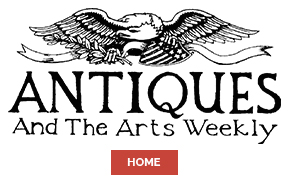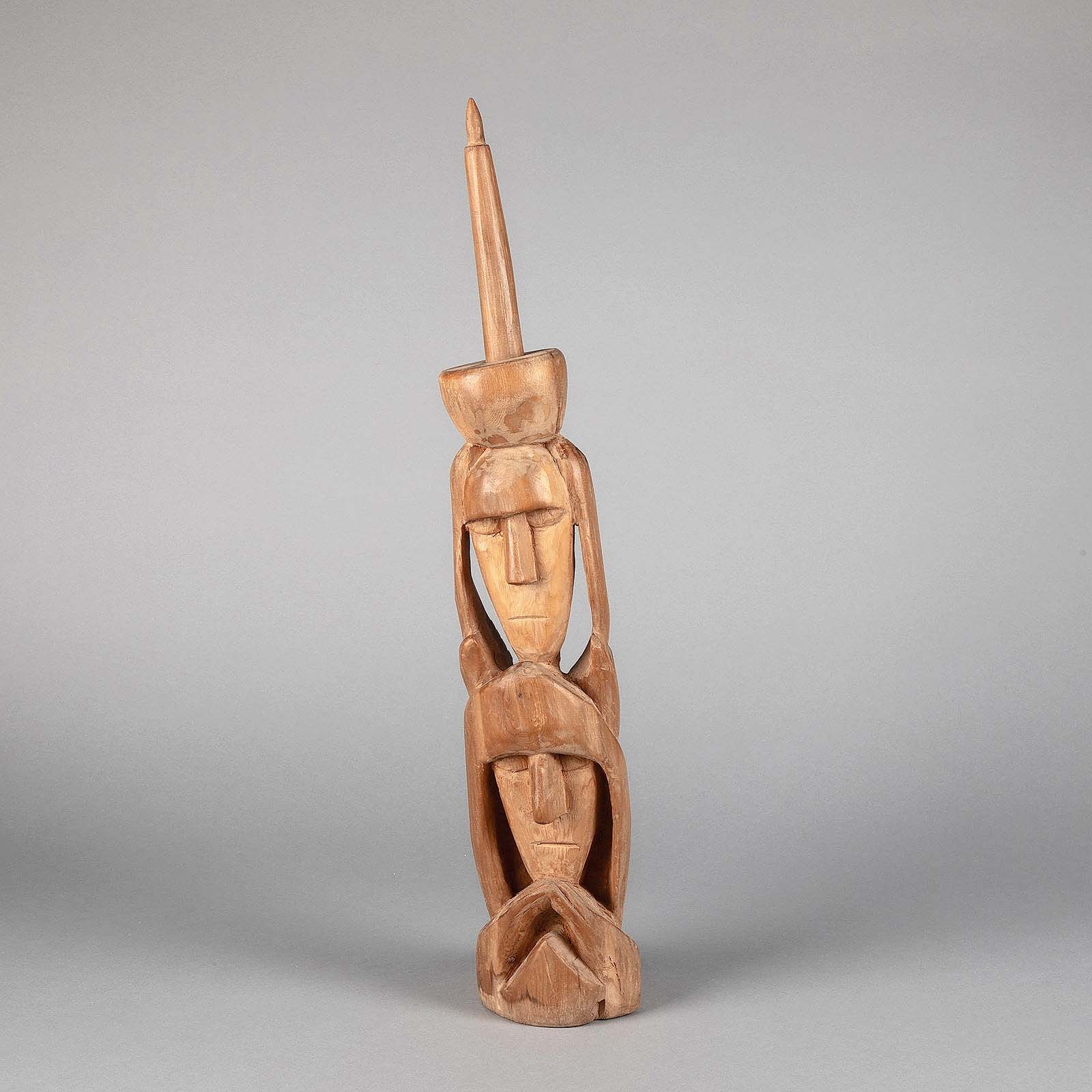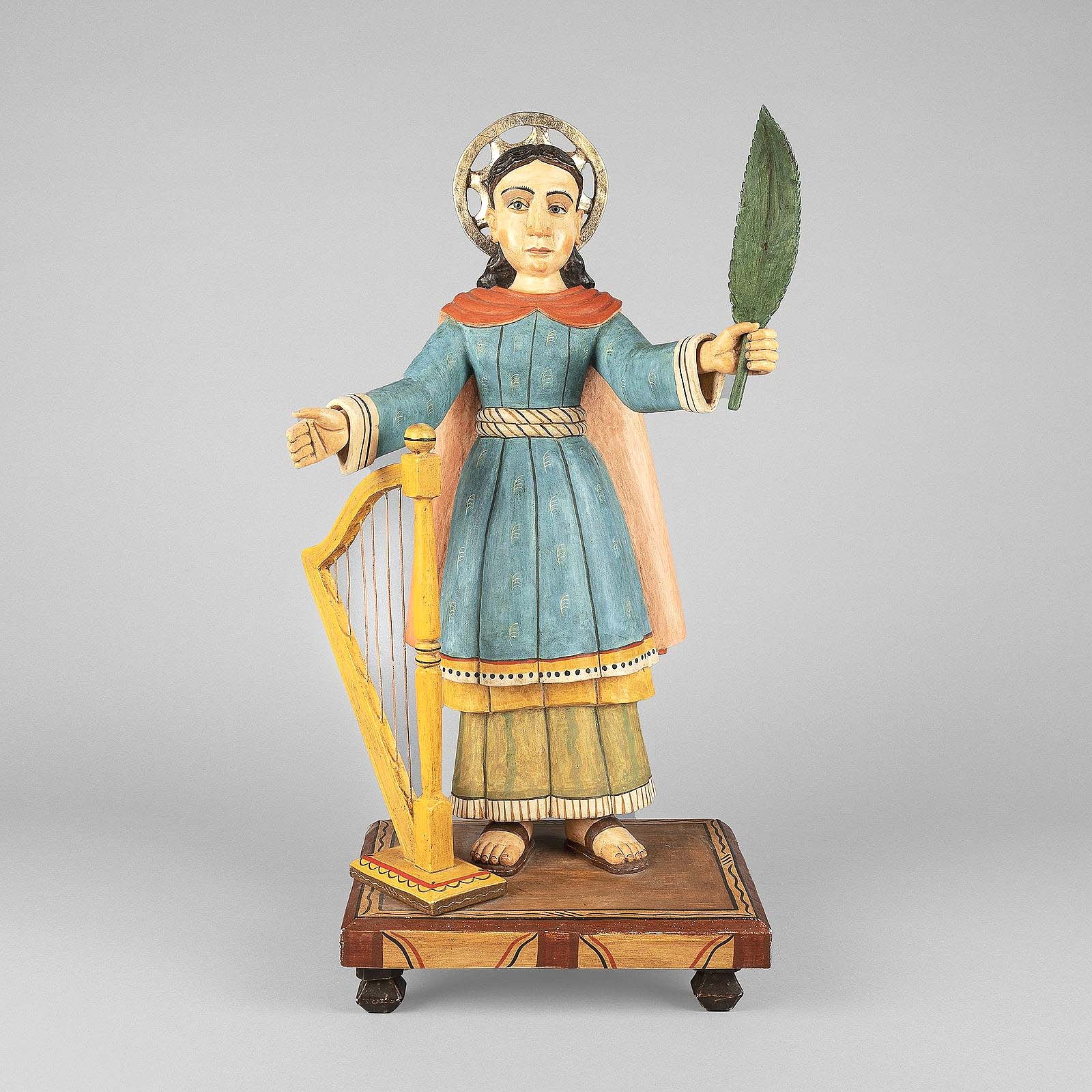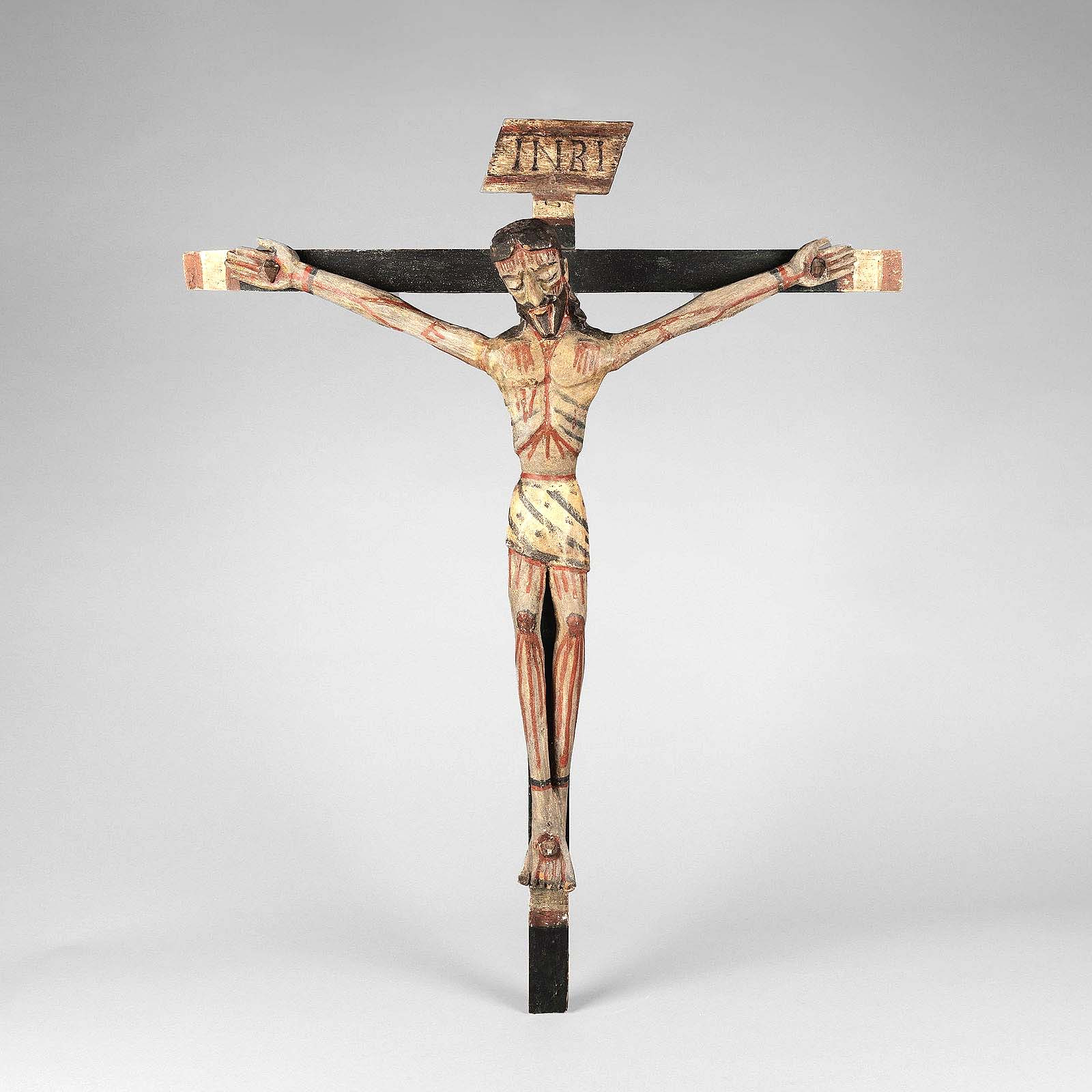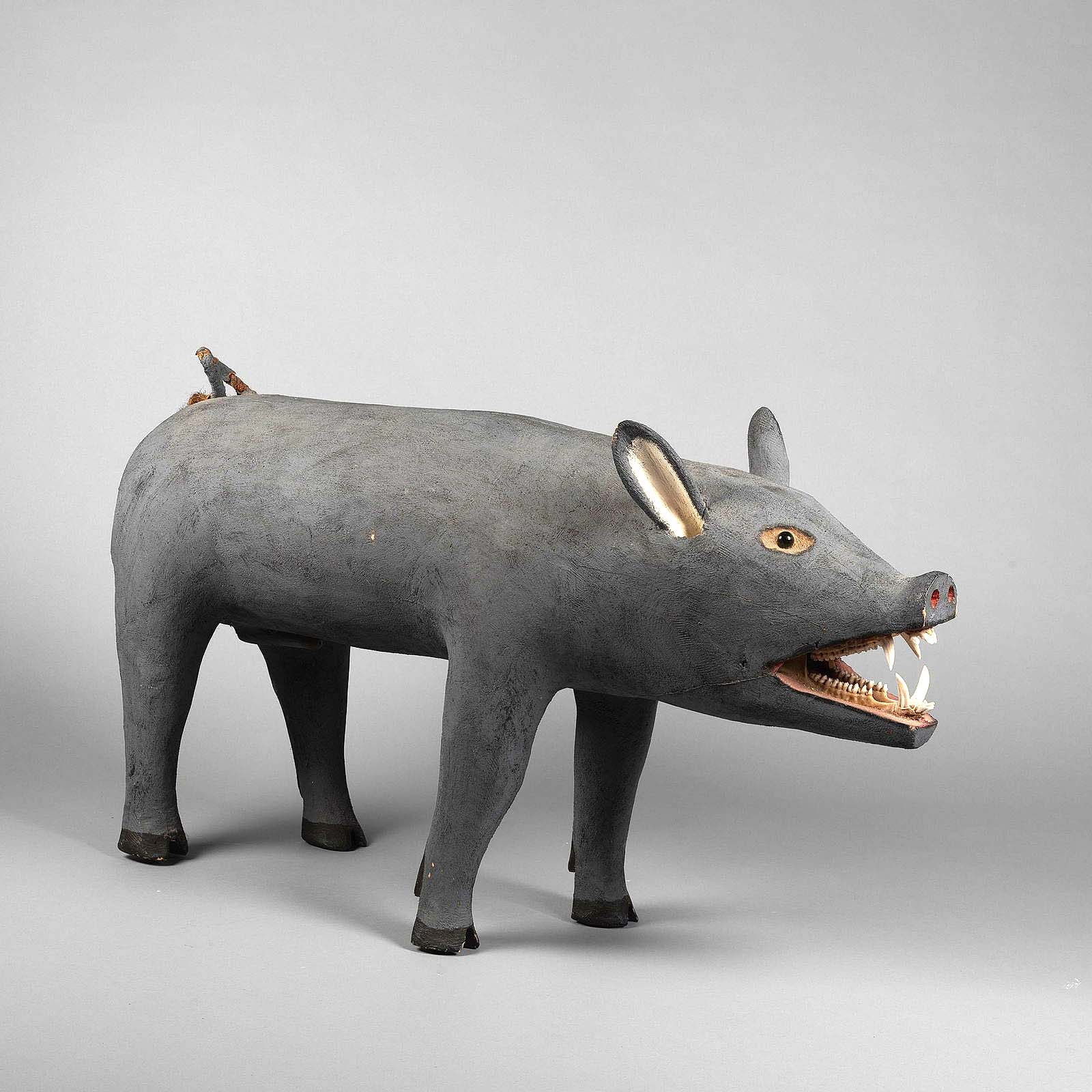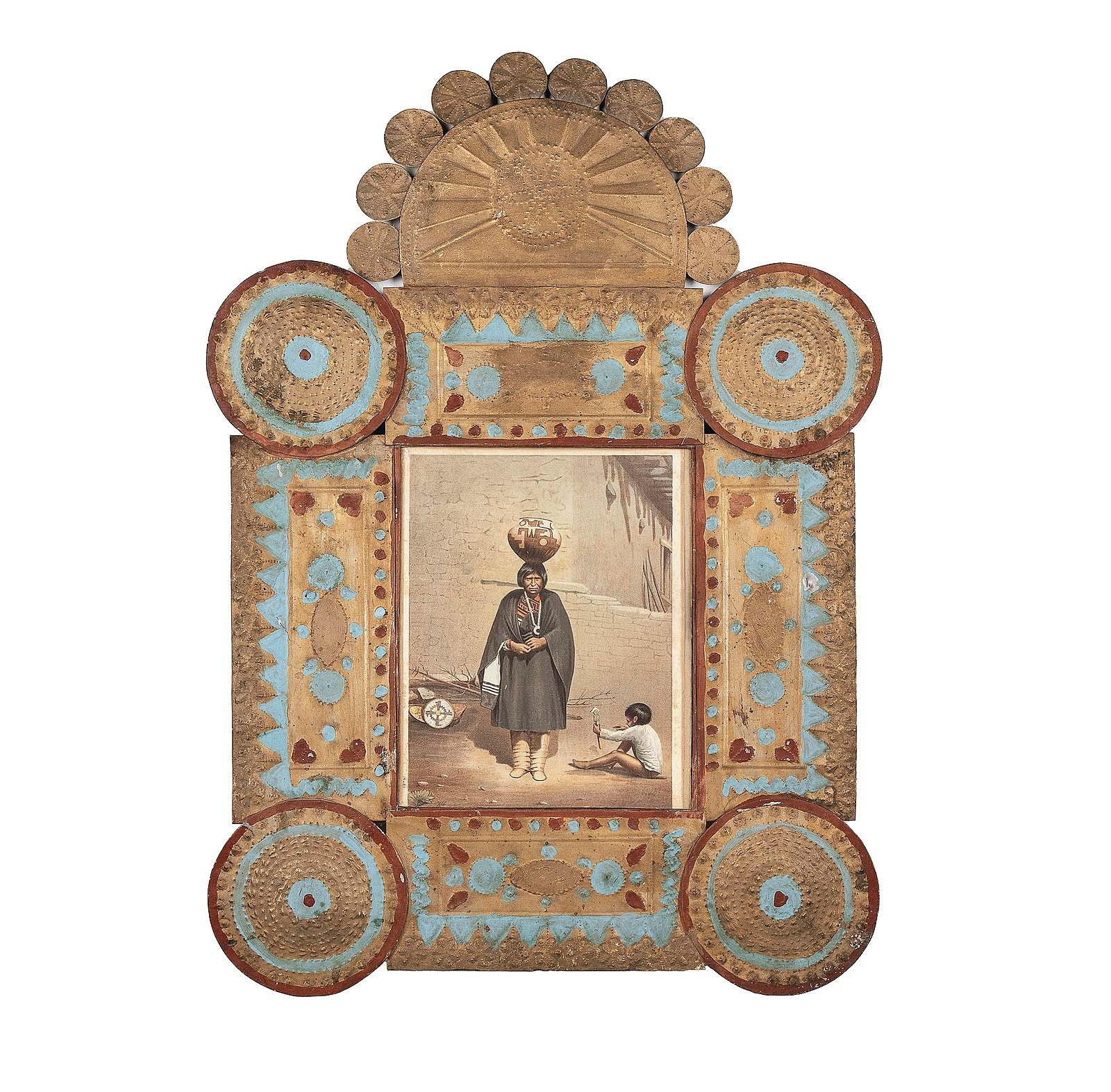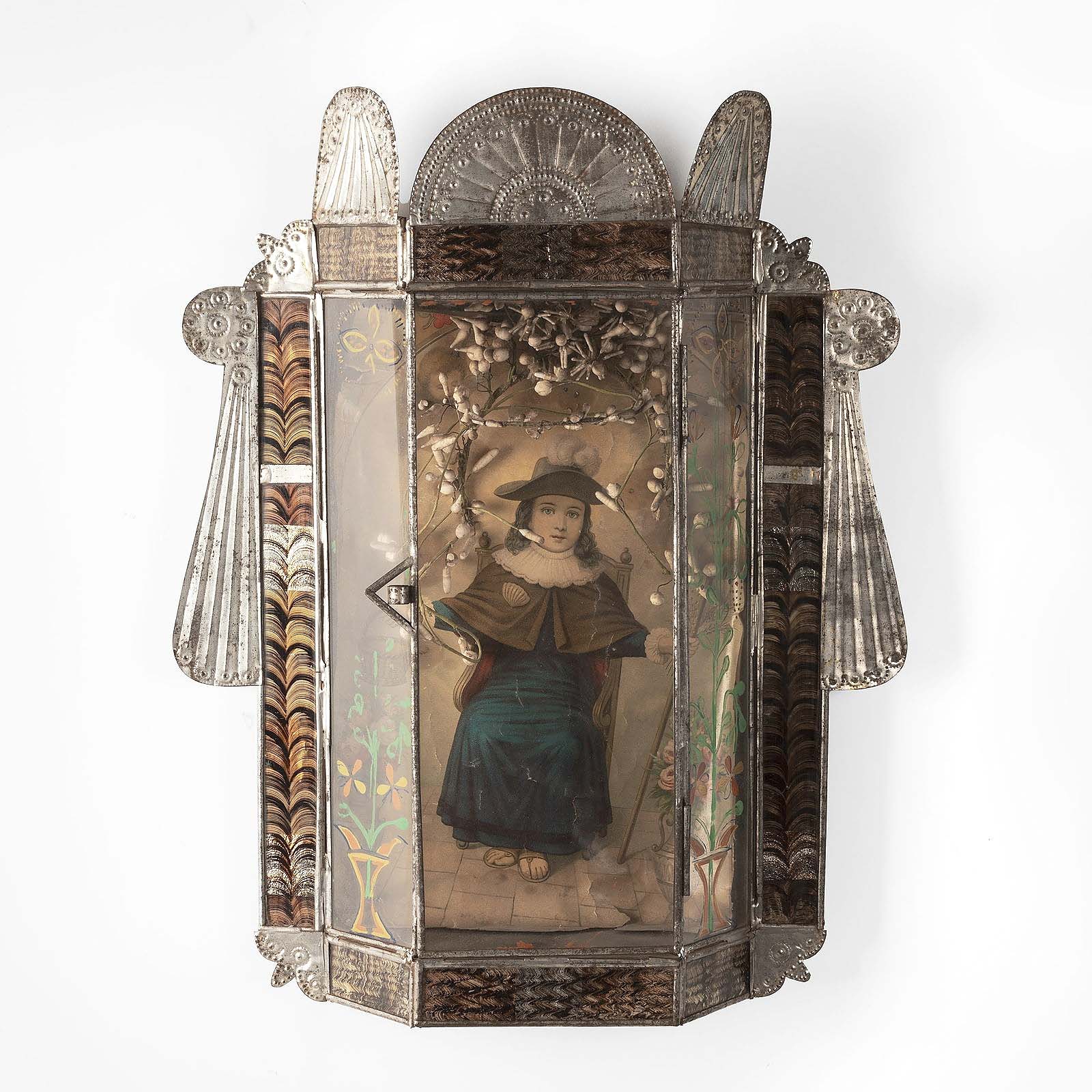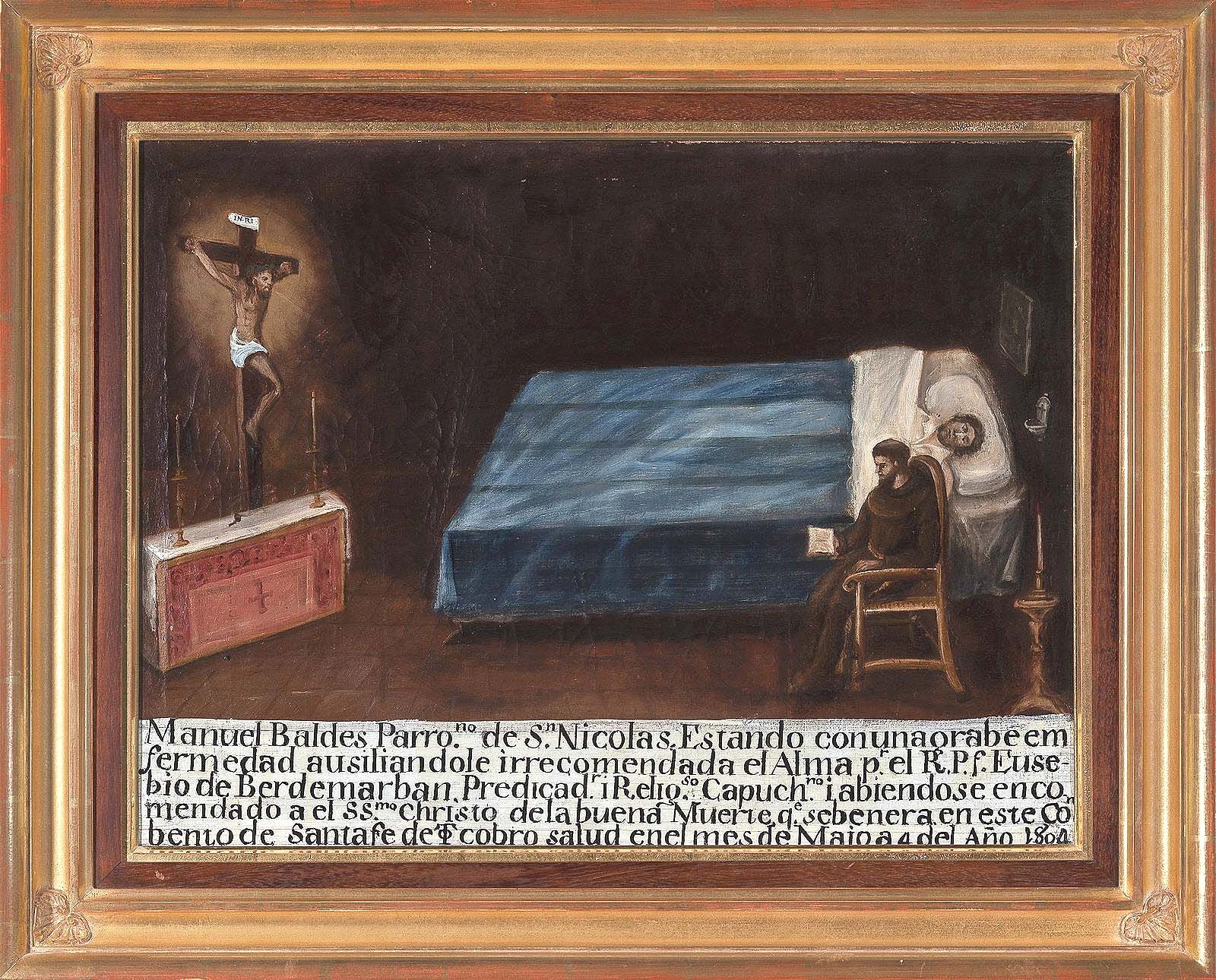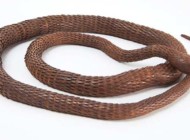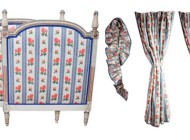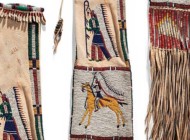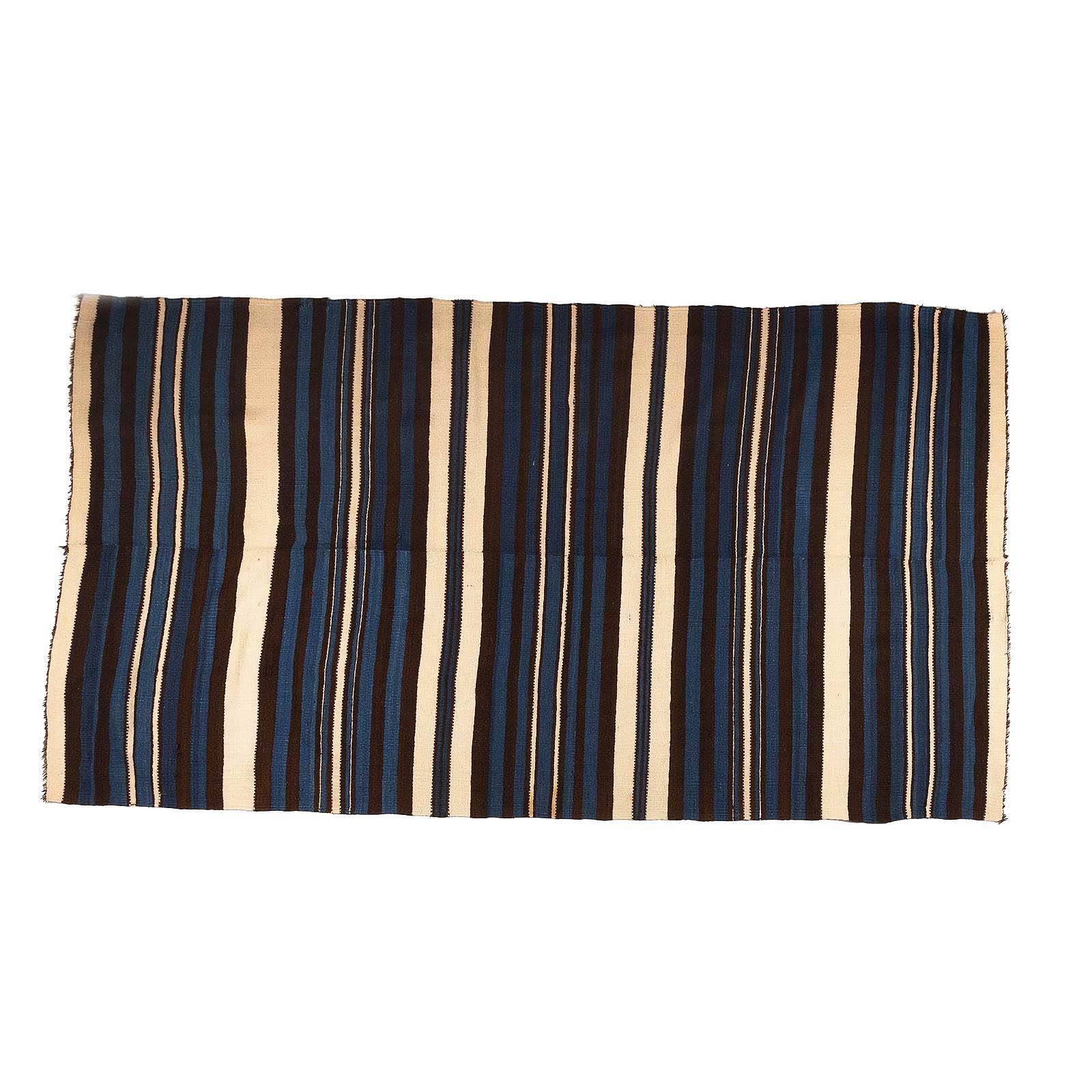
Folding up for the sale-high price of $8,610 was this Rio Grande indigo banded blanket, circa 1860, New Mexico, churro wool and indigo dyes, 93½ by 52½ inches ($8/12,000).
Review by Kiersten Busch
SANTA FE, N.M. — “Santa Fe Art Auction’s New Mexico Now sale saw excellent performance, with over 300 lots of uniquely regional works and enjoyed robust bidding activity for many of the works on offer,” shared Olivia Sherman, the firm’s research associate. “New Mexican and Latin American folk art including tinwork, bultos and retablos, as well as Saltillo, Rio Grande and Chimayo textiles performed very well. We saw strong interest in many historic lots, including works by Pedro Antonio Fresquís, José Benito Ortega and José Aragón, as well as pieces by contemporary santeros and santeras.”
Santa Fe Art Auction celebrated the cultural life and heritage of New Mexico and the Southwest in its two-day New Mexico Now auction, conducted July 23-24. The sale also highlighted early Mexican and Spanish Colonial impacts on the region. With a sell-through rate of 87 percent, the auction totaled $355,000. “The sale saw more than 5,000 registered bidders from 34 countries, and lots were won by both emerging and established collectors,” Sherman added.
The first day’s 167 lots were led by a Rio Grande indigo banded blanket, which was bid within its $8/12,000 estimate to achieve $8,610, the highest price of either day. Made circa 1860 with churro wool and indigo dyes, the blanket measured 93½ inches long and had provenance to a private collection in New Mexico. Two other Rio Grande blankets also found new homes. An example made circa 1860 with churro wool, brazilwood and indigo dyes also came from a private collection in New Mexico and made $4,613, while an example made from hand spun wools and indigo dye circa 1880 realized $984.
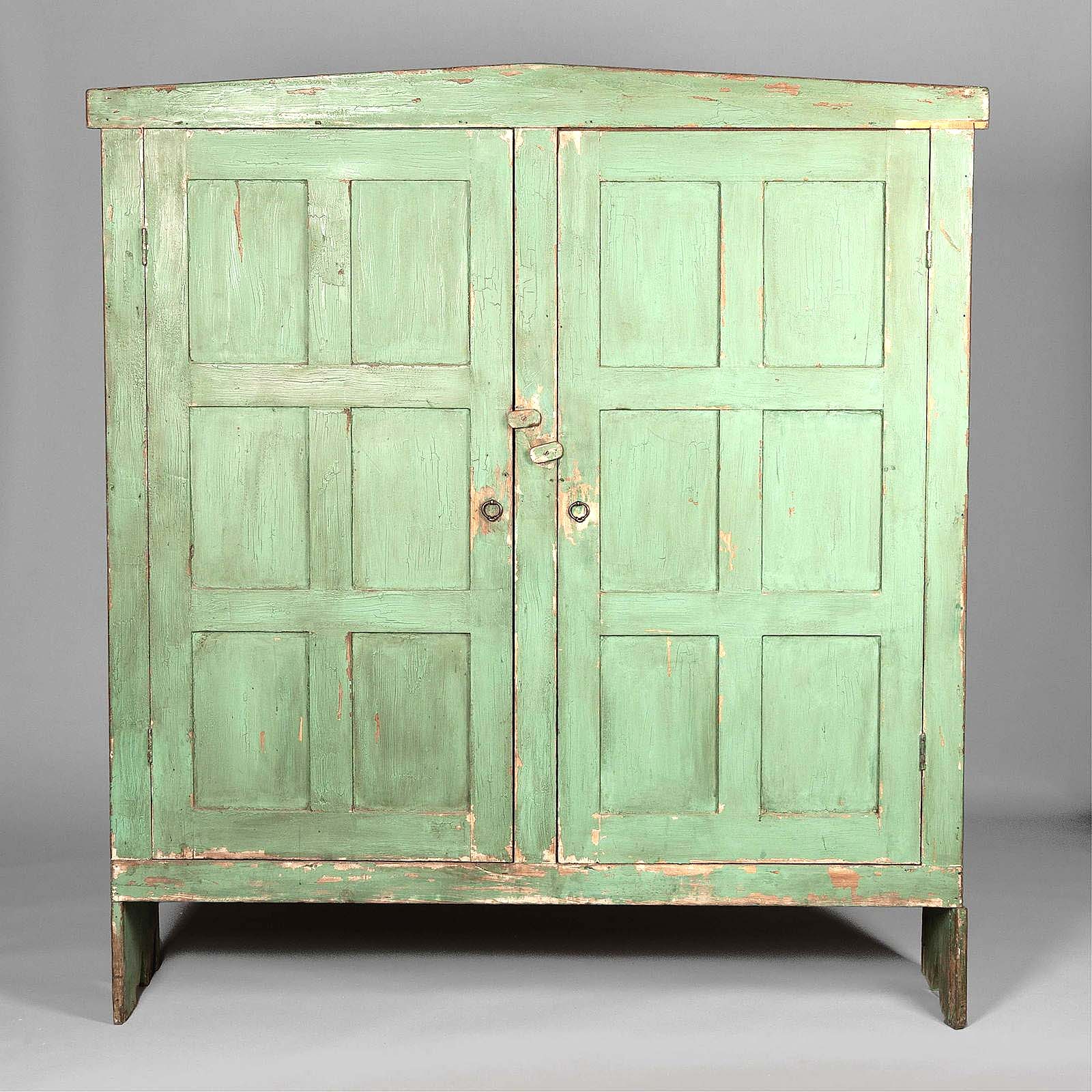
This painted green trastero was made circa 1925 in New Mexico and had provenance to a New York City private collection; it sold within estimate for $2,214 ($1,5/2,500).
The blankets belonged to the ethnographic and indigenous artifacts category, which featured 26 lots on the first day. Also popular in that category were polychrome candelabras from Mexico made circa 1945, which Sherman said, “had strong bidding activity and did exceptionally well, selling for $1,845, well over three times its low estimate.”
An indigenous-made trastero, or storage sideboard, carved from wood with metal detailing in New Mexico circa 1940 also made noise, closing its doors for $1,353. A second trastero, this one made in New Mexico circa 1925, earned $2,214. Still retaining its original green paint, the 67½-inch-high example had provenance to a private collection in New York City.
Seventy-four lots of fine art sold, ranging in price from $246 for a pair of cajitas, or little decorative boxes, from Mexico, to $5,535 for Patrociño Barela’s untitled carved family group with candle. The wooden folk art piece came from a private collection in Utah and was inscribed “PAT BAR.” Five more of Barela’s carved wood sculptures were offered, and all of them sold, with prices peaking at $4,305 for a 10-inch-high figural group and dipping to $2,768 for a votive figure.
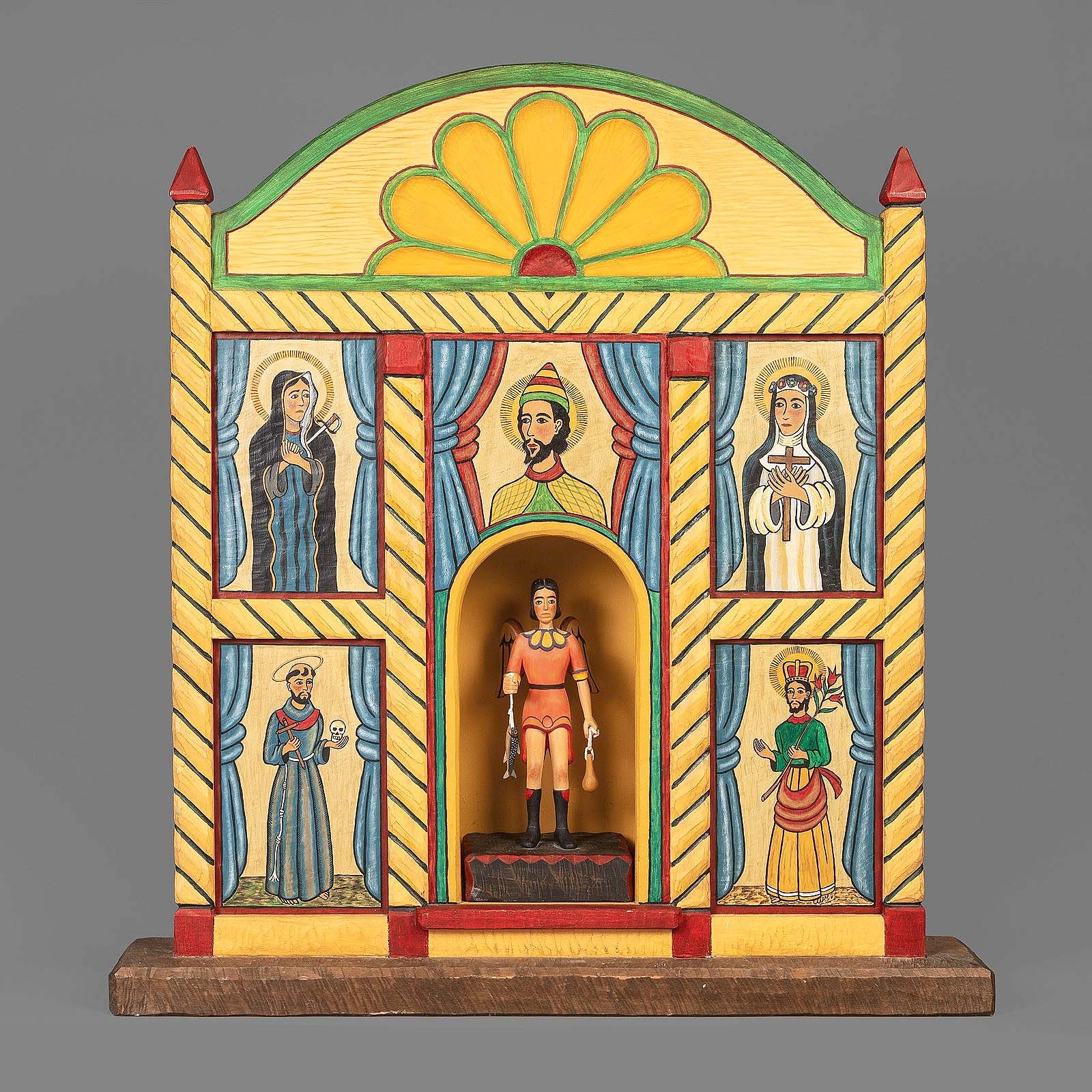
Dixon, N.M., resident Horacio E. Valdez (1929-1992) was the artist behind “San Rafael Altar Scene,” 1979, carved and painted wood, which was part of the traveling exhibition “Our Saints Among Us: 400 Years of New Mexican Devotional Art” (1997-2001); it was bid to $4,674 ($4,5/6,500).
Horacio E. Valdez’s “San Rafael Altar Screen,” made from carved and painted wood, earned $4,674, landing just inside its $4,5/6,500 estimate. This example was inscribed “Horacio E Valdez / 6 27 79 / Santa Rosa De Lima / Dios Todo Poderoso / Madre De Dolores / San Jose / San Francisco De Asis,” which informed the date of completion, and which saints were depicted on the front of the altar.
“Blue Cristó” by an unknown member of the School of José Aragón and “Santa Cecilia” by Alcario Otero shared the third-highest price of the first day: $4,920. The former came from a private collection in Montana and was carved and painted sometime in the Nineteenth Century, while the latter was made in 2024 and was formerly part of the Larry Martine collection.
Paintings made up 80 percent of fine art lots, with 72 lots offered and 60 selling. A retablo by Pedro Antonio Fresquís led the group, finishing just above its $3/5,000 estimate for $5,842. The carved and painted wood image, listed as “San José and Child” in the catalog, had provenance to a private collection in Tennessee. Eleven additional retablos were sold, ranging in price from $221 for a lot of two by Gil Florence titled “Dia de la Santa Cruz” and “San Ysidro,” to $861 for two examples by José Rafael Aragón et al: “Cristo Entierro” (circa 1840) and “San Ignacio de Loyola” (circa 1820).
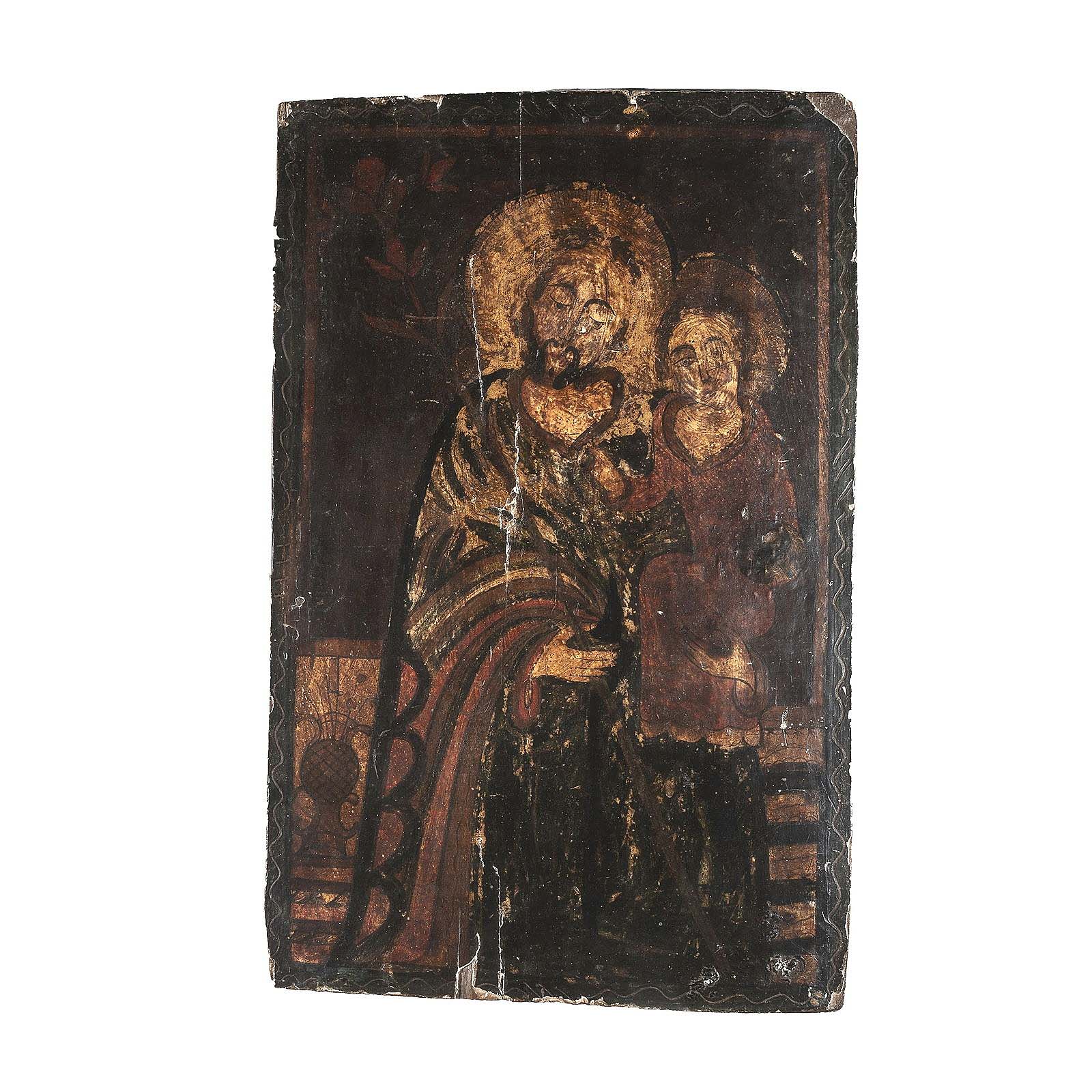
This retablo of San José and Child by Pedro Antonio Fresquís (New Mexico, 1749-1831), circa 1800, carved and painted wood, 18¼ by 11-7/8 inches, was carried to $5,842 ($3/5,000).
Thirteen lots of carved and painted wood works by santeros, or “saint-makers,” crossed the block, with the highest price — $3,690 — earned by “San Jose” by the Quill Pen Santero. The folk art piece was made circa 1840 in New Mexico. Two other lots made by the Quill Pen Santero also sold, including “Nuestra Señora de San Juan de los Lagos,” which rose to $2,091, and an untitled circa 1825 example which garnered $1,353.
Fourteen oil paintings will now hang on new walls and sold with prices ranging from $295 for Helen McPherson’s untitleddepiction of Ranchos de Taos, to $3,075 for “Ex Voto,” an oil painting by an unknown Mexican artist. Completed in 1804, the painting came from a private collection in New Mexico and contained an inscription in Spanish.
Sherman also highlighted “a mixed media piece by Mamie Deschillie, an important Diné (Navajo) folk artist.” The painting of a cowboy on a horse went for over twice its high estimate, landing at $2,768.
A depiction of Santo Niño de Atocha in tin and painted glass by the La Mesilla Tinsmith was the highest-earning of 10 lots of tinwork in the painting category, making $4,612. Made in New Mexico circa 1900, the stamped tin, reverse-painted glass panel, print and mixed media work had provenance to the Tyrone Campbell collection and surpassed its $3/4,500 estimate.
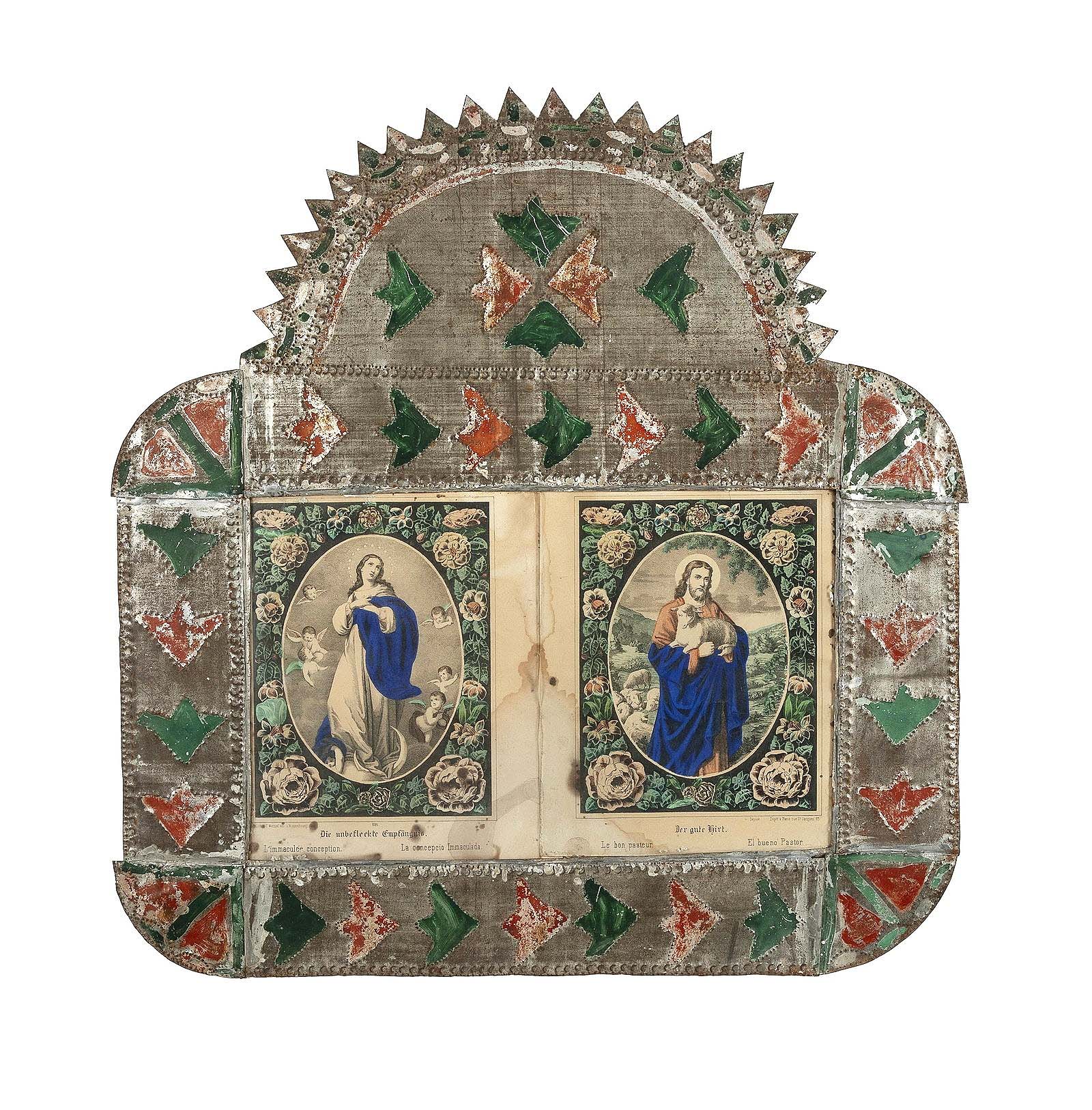
With provenance to multiple New Mexico collections, this red and green tin frame housing devotional prints by Higinio V. Gonzalez (New Mexico, 1842-1921), circa 1885, 23¾ by 23 inches, tapped out a $3,997 finish ($1,5/3,000).
Tinwork was also popular in the décor and accessories category, where 35 lots were offered. A red and green tin frame with devotional prints of “La concepcio Immaculada” and “El bueno Pastor” earned the highest price at $3,997. The stamped and painted tin frame, which housed the two prints, was made circa 1885 by New Mexican artist Higinio V. Gonzalez and was previously part of the collection of Robert Gallegos of Albuquerque, N.M., and another private collection in the state.
Santa Fe Art Auction’s next sale, Contemporary Art, Design and Photography, will take place on September 17-18. Prices quoted include the buyer’s premium as reported by the auction house. For information, 505-954-5858 or www.santafeartauction.com.
